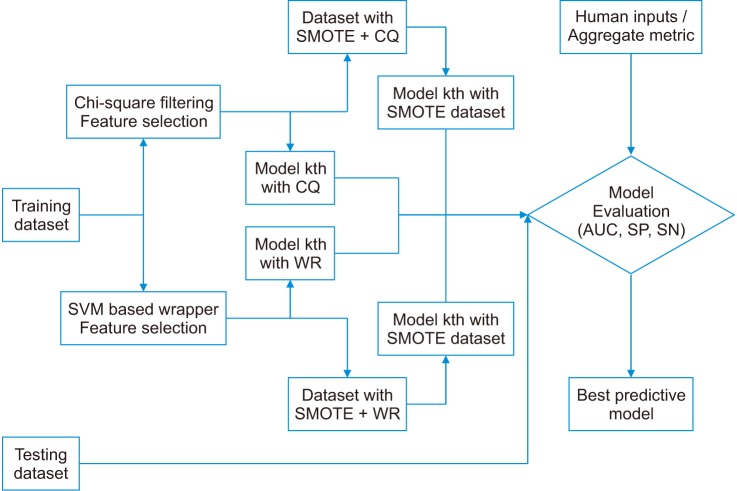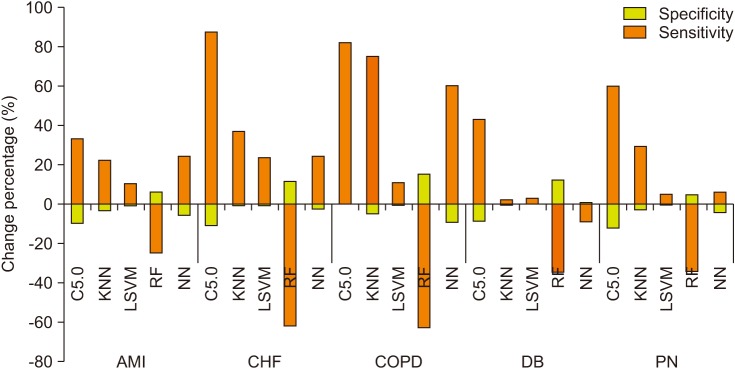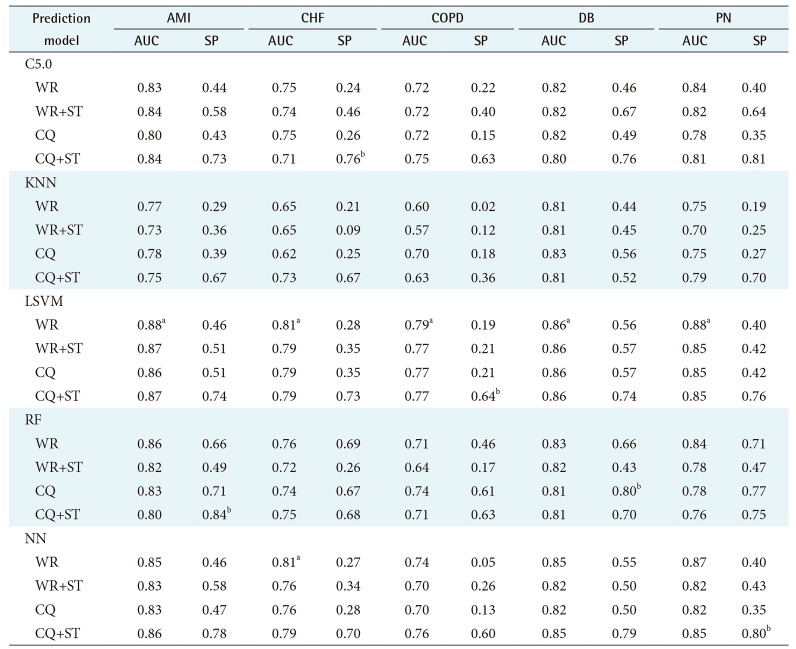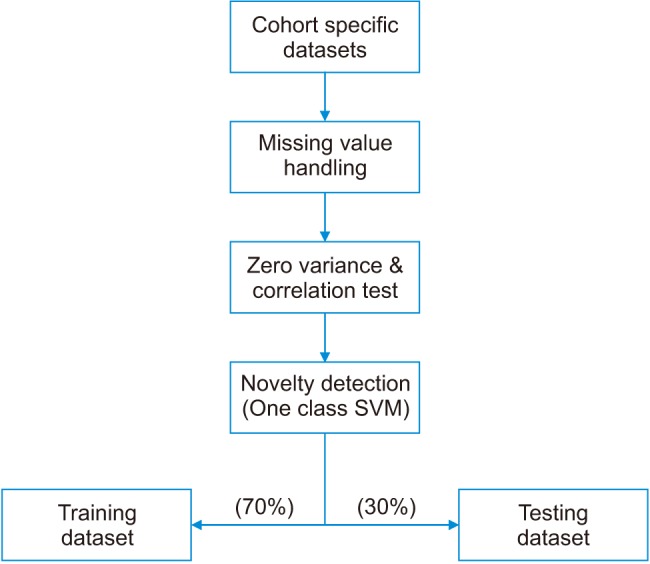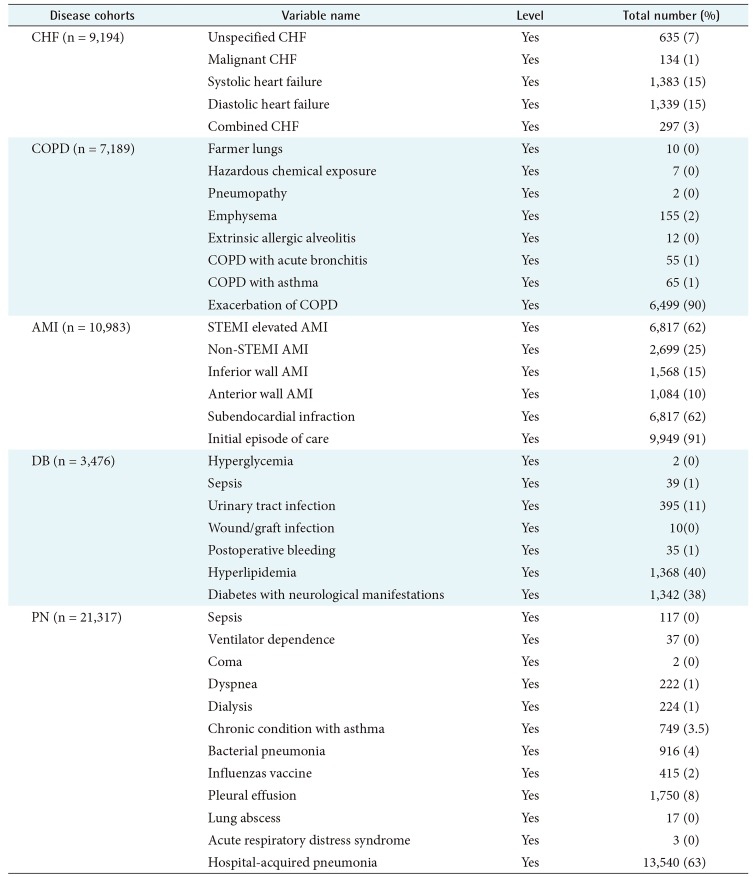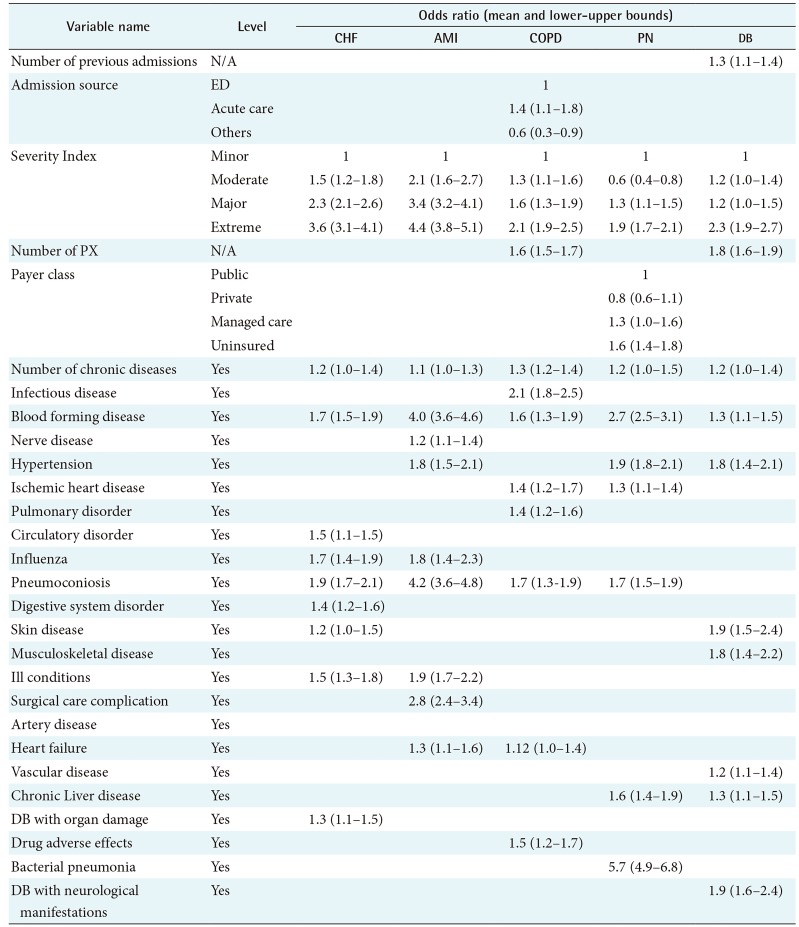4. Centers for Medicare & Medicaid Services (CMS), HHS. Medicare Program; Medicare Shared Savings Program; Accountable Care Organizations: pathways to success and extreme and uncontrollable circumstances policies for performance year 2017: final rules. Fed Regist 2018;83(249):67816-68082. PMID:
30596411.


5. Lu M, Sajobi T, Lucyk K, Lorenzetti D, Quan H. Systematic review of risk adjustment models of hospital length of stay (LOS). Med Care 2015;53(4):355-365. PMID:
25769056.


6. Rowan M, Ryan T, Hegarty F, O'Hare N. The use of artificial neural networks to stratify the length of stay of cardiac patients based on preoperative and initial postoperative factors. Artif Intell Med 2007;40(3):211-221. PMID:
17580112.


7. Wrenn J, Jones I, Lanaghan K, Congdon CB, Aronsky D. Estimating patient's length of stay in the Emergency Department with an artificial neural network. AMIA Annu Symp Proc 2005;1155. PMID:
16779441.



8. Morton A, Marzban E, Giannoulis G, Patel A, Aparasu R, Kakadiaris IA. A comparison of supervised machine learning techniques for predicting short-term in-hospital length of stay among diabetic patients Proceedings of 2014 13th International Conference on Machine Learning and Applications; 2014 Dec 3–6. Detroit, MI; p. 428-431.

9. Jiang X, Qu X, Davis LB. Using data mining to analyze patient discharge data for an urban hospital Proceedings of the 2010 International Conference on Data Mining (DMIN); 2010 Jul 12–15. Las Vegas, NV; p. 139-144.

10. Azari A, Janeja VP, Levin S. Imbalanced learning to predict long stay Emergency Department patients Proceedings of 2015 IEEE International Conference on Bioinformatics and Biomedicine (BIBM); 2015 Nov 9–12. Washington, DC; p. 807-814.

11. Salah H. Predicting inpatient length of stay in western New York health service area using machine learning algorithms [dissertation]. Binghamton (NY): State University of New York at Binghamton; 2017.

12. Li JS, Tian Y, Liu YF, Shu T, Liang MH. Applying a BP neural network model to predict the length of hospital stay. In: Huang G, Liu X, He J, Klawonn F, Yao G, editors. Health information science. Heidelberg, Germany: Springer; 2013. p. 18-29.

14. Thompson B, Elish K, Steele R. Machine learning-based prediction of prolonged length of stay in newborns Proceedings of 2018 17th IEEE International Conference on Machine Learning and Applications (ICMLA); 2018 Dec 17–20. Orlando, FL; p. 1454-1459.

15. Allard JP, Keller H, Jeejeebhoy KN, Laporte M, Duerksen DR, Gramlich L, et al. Decline in nutritional status is associated with prolonged length of stay in hospitalized patients admitted for 7 days or more: a prospective cohort study. Clin Nutr 2016;35(1):144-152. PMID:
25660316.


16. Kuhn M. Building predictive models in R using the caret package. J Stat Softw 2008;28(5):1-26. PMID:
27774042.



17. Amer M, Goldstein M, Abdennadher S. Enhancing one-class support vector machines for unsupervised anomaly detection Proceedings of the ACM SIGKDD Workshop on Outlier Detection and Description; 2013 Aug 11. Chicago, IL; p. 8-15.

18. Guyon I, Elisseeff A. An introduction to variable and feature selection. J Mach Learn Res 2003;3:1157-1182.

19. Chawla NV, Bowyer KW, Hall LO, Kegelmeyer WP. SMOTE: synthetic minority over-sampling technique. J Artif Intell Res 2002;16:321-357.

20. Jeni LA, Cohn JF, De La Torre F. Facing imbalanced data: recommendations for the use of performance metrics Proceedings of 2013 Humaine Association Conference on Affective Computing and Intelligent Interaction; 2003 Sep 2–5. Geneva, Switzerland; p. 245-251.

21. Chuang MT, Hu YH, Lo CL. Predicting the prolonged length of stay of general surgery patients: a supervised learning approach. Int Trans Oper Res 2018;25(1):75-90.

22. Wang Y, Stavem K, Dahl FA, Humerfelt S, Haugen T. Factors associated with a prolonged length of stay after acute exacerbation of chronic obstructive pulmonary disease (AECOPD). Int J Chron Obstruct Pulmon Dis 2014;9:99-105. PMID:
24477272.



23. Hachesu PR, Ahmadi M, Alizadeh S, Sadoughi F. Use of data mining techniques to determine and predict length of stay of cardiac patients. Healthc Inform Res 2013;19(2):121-129. PMID:
23882417.



24. Gonçalves-Bradley DC, Lannin NA, Clemson LM, Cameron ID, Shepperd S. Discharge planning from hospital. Cochrane Database Syst Rev 2016;(1):CD000313. PMID:
26816297.



25. Chandra S, Wright SM, Howell EE. The Creating Incentives and Continuity Leading to Efficiency staffing model: a quality improvement initiative in hospital medicine. Mayo Clin Proc 2012;87(4):364-371. PMID:
22469349.



26. Menachemi N, Rahurkar S, Harle CA, Vest JR. The benefits of health information exchange: an updated systematic review. J Am Med Inform Assoc 2018;25(9):1259-1265. PMID:
29718258.



27. Kaufman BG, Spivack BS, Stearns SC, Song PH, O'Brien EC. Impact of accountable care organizations on utilization, care, and outcomes: a systematic review. Med Care Res Rev 2019;76(3):255-290. PMID:
29231131.


28. Hasan O, Orav EJ, Hicks LS. Insurance status and hospital care for myocardial infarction, stroke, and pneumonia. J Hosp Med 2010;5(8):452-459. PMID:
20540165.


29. Bai G, Anderson GF. US Hospitals are still using chargemaster markups to maximize revenues. Health Aff (Millwood) 2016;35(9):1658-1664. PMID:
27605648.


30. Krinsky S, Ryan AM, Mijanovich T, Blustein J. Variation in payment rates under Medicare's inpatient prospective payment system. Health Serv Res 2017;52(2):676-696. PMID:
27060973.




